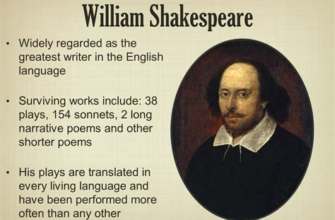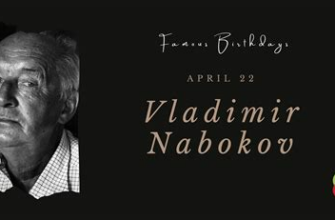Throughout the annals of history, there have been countless individuals who have left an indelible mark on the world, influencing generations to come with their unrivaled brilliance and ingenuity. Among these luminaries, there is one name that shines brighter than the rest - Leonardo da Vinci. Widely regarded as one of the most remarkable figures of the Italian Renaissance, da Vinci's multifaceted talents surpassed the realms of artistry.
Da Vinci's ingenious mind was as expansive as the vast canvas on which he painted. His artistic prowess was merely the tip of the iceberg, for his insatiable curiosity and wide-ranging interests spanned across various disciplines. His intellectual pursuits encompassed scientific investigations, engineering marvels, architectural designs, anatomical studies, and mathematical theories, to name but a few. The sheer depth and breadth of his knowledge were the epitome of a true polymath, a rarity in any era.
A Visionary Ahead of His Time
Da Vinci's unquenchable thirst for knowledge propelled him to explore uncharted territories, both metaphorically and literally. His visionary ideas and inventions were often far beyond the comprehension of his contemporaries, making him an enigmatic figure ahead of his time. His sketches and blueprints for concepts such as flying machines, tanks, and automated devices proved his unrivaled ability to fathom technological advancements that would only become a reality centuries later.
Moreover, da Vinci's artistic oeuvre transcended the conventional boundaries of his era. His mastery of techniques, such as sfumato and chiaroscuro, brought a sense of realism and depth to his paintings that had never been seen before. His works, including the famous Mona Lisa and The Last Supper, continue to captivate viewers with their enigmatic allure, leaving them awestruck by the sheer brilliance of his brushwork and the captivating emotions that radiate from the canvas.
In this biography, we will delve into the life and genius of Leonardo da Vinci, exploring the various facets of his unparalleled talent and the lasting impact he has had on art, science, and humanity as a whole. Through an in-depth examination of his achievements, innovations, and personal struggles, we will gain a profound understanding of the man behind the legend and the enduring legacy he has left behind.
A Visionary Ahead of His Time

Discover the remarkable brilliance and foresight of the extraordinary individual known for his unrivaled contributions to art, science, and innovation. Leonardo da Vinci, a visionary mind of unparalleled ingenuity, possessed an expansive range of knowledge and skills that transcended the boundaries of his era. Through his exceptional talents and insatiable curiosity, da Vinci pushed the boundaries of artistic expression, scientific exploration, and technological advancements, forever leaving a lasting legacy on the world.
- Explore da Vinci's artistic brilliance: Dive into the mesmerizing world of da Vinci's paintings and sketches, revealing his masterful techniques, meticulous attention to detail, and innovative approaches that revolutionized the art world.
- Unveiling the mind of a polymath: Delve into da Vinci's insatiable thirst for knowledge as he continuously sought to understand and unravel the mysteries of the natural world. Witness the astonishing breadth of his scientific inquiries, ranging from anatomy and geology to botany and engineering.
- The genius of invention: Embark on a journey through da Vinci's extraordinary inventions and designs, marveling at the visionary concepts and groundbreaking ideas that were far ahead of his time. From flying machines to tanks, his blueprints and inventions anticipate the technologies of the future.
- An indomitable spirit of innovation: Witness da Vinci's relentless pursuit of innovation as he fearlessly challenged conventional wisdom and defied societal norms. His ability to merge art and science not only reshaped the Renaissance era but also continues to inspire and captivate contemporary thinkers and creatives worldwide.
- The legacy of a Renaissance luminary: Reflect on the enduring influence of da Vinci's profound impact on various fields of study and his status as an emblematic figure of the Renaissance. His legacy as a universally recognized polymath and artistic genius continues to inspire generations, reminding us of the extraordinary capabilities that reside within each of us.
Early Life and Education
In this section, we will explore the formative years and educational background of the internationally acclaimed polymath from Italy. We will delve into his early upbringing, gaining insights into the influences that shaped his future artistic and intellectual pursuits.
1. Birth and Family: Leonardo da Vinci was born in the Italian village of Anchiano in a family of humble origins. Growing up in an atmosphere driven by simplicity and the profound love of learning, his early experiences fostered a deep curiosity and passion for knowledge.
2. Educational Influences: During his early years, da Vinci had access to an eclectic range of learning experiences. He had the opportunity to study under various notable artists and intellectuals of the time, such as Andrea del Verrocchio, a master painter, sculptor, and goldsmith. Through these mentorships, da Vinci developed a solid foundation in art and was exposed to diverse disciplines.
3. Spatial and Scientific Exploration: Da Vinci's inquisitive mind led him to explore a wide array of subjects beyond traditional education. He delved into the realms of anatomy, engineering, architecture, and mathematics, among others. This multidisciplinary approach to learning laid the groundwork for his future inventions, anatomical studies, and unique artistic techniques.
4. The Influence of Nature: Growing up surrounded by the natural beauty of the Italian countryside, da Vinci developed a deep appreciation for the wonders of the world. He meticulously observed and documented nature, honing his skills in capturing its intricate details in his artwork. This profound connection with nature would become a defining characteristic of his artistic style.
In summary, this section will explore the foundations of Leonardo da Vinci's early life and education, showcasing the diverse and influential factors that contributed to his exceptional artistic and intellectual abilities. Understanding these formative years will provide essential context for the remarkable achievements that would follow in his later life.
Exploring Leonardo's Unique Artistic Style and Iconic Masterpieces
In this section, we delve into the distinctive artistic approach employed by the legendary Italian polymath, Leonardo da Vinci, and explore the enduring impact of his iconic works. Leonardo's creative genius transcended conventional artistic conventions, resulting in a style that was both innovative and revolutionary for his time.
| Artistic Style | Iconic Works |
|---|---|
| Leonardo's artistry exhibited unparalleled adaptability and versatility, allowing him to effortlessly shift between different techniques, mediums, and subject matters. His ability to seamlessly fuse knowledge from various fields, such as anatomy, engineering, and nature, with his artistic vision, resulted in a style that was harmonious yet daring. This amalgamation of influences can be seen in his meticulous attention to detail, realistic portrayal of human emotions, and the use of chiaroscuro to create depth and contrast in his paintings. | Leonardo's mastery is epitomized by a myriad of iconic works that have captivated audiences for centuries. One of his most renowned pieces, the Mona Lisa, symbolizes the essence of his artistic brilliance. This enigmatic portrait showcases Leonardo's skill in capturing human expression and the intricate play of light and shadow. The Last Supper, a monumental fresco, depicts a profound narrative moment with its exquisite composition and meticulous detail. Other notable works such as The Vitruvian Man, The Annunciation, and The Baptism of Christ further exemplify his profound understanding of both the physical and spiritual realms. |
Leonardo's unique style continues to inspire and influence artists today, shaping the course of art history and establishing him as a true visionary whose impact extends far beyond his own era.
The Remarkable Scientific Discoveries of the Multitalented Genius
Undoubtedly, one of the most remarkable aspects of Leonardo da Vinci's incredibly diverse and eclectic body of work lies in his groundbreaking scientific discoveries. This multifaceted genius consistently pushed the boundaries of knowledge, exploring a wide array of scientific disciplines and leaving an indelible mark on various branches of science.
- In the field of anatomy, Leonardo's meticulous dissections resulted in detailed anatomical drawings that proved instrumental in advancing our understanding of the human body. His depictions went beyond superficial representations, delving into the complex intricacies of muscles, organs, and skeletal structures.
- Leonardo's passion for engineering and mechanics led to numerous scientific breakthroughs. His innovative designs for flying machines and submarines, although never realized during his time, laid the foundation for future advancements in aerospace and maritime engineering.
- Through his keen observation of natural phenomena, da Vinci made significant contributions to the fields of geology and paleontology. His studies of fossils and rock formations enabled him to propose groundbreaking theories on the formation of mountains and the history of the Earth.
- Leonardo's insatiable curiosity extended to the realms of physics and optics. He conducted experiments on light and shadow, leading to critical insights into the nature of light and its behavior. His studies also included investigations into the phenomenon of perspective, revolutionizing the field of visual arts.
- Furthermore, da Vinci's interest in botany and natural sciences resulted in detailed botanical illustrations and innovative ideas for landscape architecture. He meticulously documented various plant species and their characteristics, contributing to the knowledge of botany in his era.
In conclusion, Leonardo da Vinci's scientific discoveries encompass a broad spectrum of disciplines, spanning from anatomy and engineering to geology, optics, and botany. His insatiable curiosity and meticulous attention to detail allowed him to challenge existing knowledge, paving the way for future scientific advancements. The enduring legacy of his scientific inquiries continues to inspire and captivate scholars and enthusiasts alike.
Engineering Marvels and Innovations by the Gifted Mind of Leonardo

The extraordinary mind of Leonardo da Vinci extended far beyond his artistic prowess, venturing into realms of engineering and invention that were unparalleled in his time. This section delves into the remarkable engineering feats and groundbreaking inventions that showcased Leonardo's unmatched ingenuity and ability to think outside the box. Through his relentless curiosity and relentless pursuit of knowledge, Leonardo left an indelible mark on the world of engineering and shaped the course of technological advancements.
The Impact of Leonardo's Ideas on Modern Science and Technology
One of the most influential figures in history, Leonardo da Vinci's genius extended far beyond his achievements as an artist. His thoughts and ideas on various subjects have had a profound impact on the development of science and technology in the modern era.
Leonardo's insatiable curiosity and tireless pursuit of knowledge led him to explore a wide range of fields, including anatomy, engineering, and physics. His meticulous observations of the human body, for instance, contributed significantly to our understanding of anatomy and paved the way for advancements in medical science.
- His notebooks, filled with detailed sketches and diagrams, reveal his fascination with the flight of birds and his attempts to understand the principles of aerodynamics. These early inquiries laid the groundwork for the development of modern aviation.
- Leonardo's studies of water flow and hydrodynamics also laid the foundation for the modern science of fluid mechanics. His insights into the movement of water were instrumental in the design of more efficient machinery, such as waterwheels and turbines.
- Additionally, Leonardo's explorations of optics and light laid the groundwork for advancements in photography, as well as our understanding of how the human eye perceives color and depth.
Furthermore, Leonardo's interdisciplinary approach, combining art and science, has had a lasting impact on modern innovation. His ability to bridge the gap between aesthetics and functionality has inspired countless designers and engineers, influencing fields as diverse as architecture, product design, and robotics.
In conclusion, Leonardo da Vinci's ideas and discoveries continue to shape the world of science and technology, demonstrating the enduring relevance of his polymathic pursuits. From advancements in anatomy and fluid dynamics to his visionary insights into flight and optics, his intellect and creativity continue to inspire generations of thinkers and innovators.
Exploring Leonardo da Vinci's Varied Interests: A Polymath's Journey of Curiosity and Innovation

Introduction: Leonardo da Vinci, a multi-talented individual, was not only a renowned artist but also a polymath with an insatiable curiosity that led him to explore a diverse range of interests. In this section, we delve into the fascinating world of da Vinci's wide-ranging pursuits, demonstrating his relentless desire to learn and innovate in various fields.
Dabbling in Science and Engineering: Leonardo da Vinci's inquisitive mind extended beyond art, with a deep interest in scientific and engineering principles. He delved into the realms of anatomy, studying the intricacies of human bodies and sketching detailed anatomical drawings. Moreover, da Vinci's fascination with engineering led him to envision and design various inventions, including flying machines, armored vehicles, and even an early prototype of the helicopter.
Unveiling the Wonders of Nature: In addition to his scientific pursuits, da Vinci had a profound appreciation for nature and its wonders. He spent countless hours observing and studying different species, capturing their essence through detailed drawings and notes. His keen observations of birds in flight and water currents exemplified his ability to bridge the gap between artistic expression and scientific inquiry.
Mastering the Artistic Craft: Despite his accomplishments in various other fields, Leonardo da Vinci's artistic prowess remained undeniable. He pushed the boundaries of artistic techniques, pioneering methods such as sfumato, which created a more realistic sense of depth and texture in his paintings. Through his mastery of light and shadow, da Vinci's works displayed a level of realism and emotion that captivated audiences then and continues to awe spectators today.
Seeking Knowledge Through Writing: The breadth of Leonardo da Vinci's interests is further showcased in his extensive collection of notebooks, containing a wealth of information on a wide range of topics. Through his meticulous note-taking and sketches, da Vinci demonstrated his determination to document and organize his thoughts, leaving behind a valuable resource for generations to come.
The Legacy of a Polymath: Leonardo da Vinci's relentless pursuit of knowledge and his ability to excel in numerous disciplines define his legacy as a polymath. His insatiable curiosity, dedication to detail, and innovative spirit continue to inspire generations, reminding us of the beauty and impact of exploring diverse interests and pushing the boundaries of human potential.
The Enduring Impact of Leonardo da Vinci
Leonardo da Vinci, a world-renowned polymath and artist from Italy, left behind a lasting legacy that continues to shape various aspects of our world today. His multifaceted genius and insatiable curiosity resulted in groundbreaking contributions that spanned across art, science, engineering, anatomy, and more.
- Revolutionizing Art: Leonardo da Vinci's artistic mastery extended beyond traditional boundaries, as he pioneered new techniques and perspectives that transformed the art world. His ability to capture the subtleties of human emotion and anatomy created a new standard for portrait painting and remains influential to this day.
- Pioneering Scientific Discoveries: Leonardo was not only an artist but also a true scientist. His meticulous observations and studies in fields such as anatomy, botany, and geology led to groundbreaking discoveries that laid the foundation for modern scientific understanding. His detailed anatomical drawings, for example, revealed insights into the human body centuries ahead of their time.
- Innovative Engineering and Inventions: Leonardo's engineering prowess and inventive mind were evident in his designs for various machines and inventions. From flying machines to hydraulic systems, his ideas represented a visionary approach to engineering that pushed the boundaries of possibility and inspired future generations of engineers and inventors.
- A Source of Inspiration: Leonardo da Vinci's insatiable curiosity and relentless pursuit of knowledge serve as an inspiration for aspiring creators and thinkers worldwide. His ability to seamlessly merge art and science continues to be admired and emulated by individuals seeking to break new ground and challenge conventional thinking.
- Preserving the Past: Leonardo's attention to detail extended to his work as a historian and preservationist. His meticulous documentation of historical events and ancient ruins helped preserve valuable knowledge and artifacts for future generations, ensuring that the legacies of past civilizations would not be lost to time.
In summary, Leonardo da Vinci's enduring impact on the world can be seen through his revolutionary contributions to art, science, engineering, his inspirational spirit, and his dedication to preserving history. His genius continues to inspire and shape the world we live in today, making him an unparalleled figure in history.
FAQ
Who was Leonardo da Vinci?
Leonardo da Vinci was an Italian artist and polymath who lived during the Renaissance period. He is widely regarded as one of the greatest painters of all time and was also a scientist, inventor, engineer, and writer.
What are some of Leonardo da Vinci's famous works?
Leonardo da Vinci's famous works include the Mona Lisa, The Last Supper, Vitruvian Man, and The Annunciation, among others. His paintings are highly recognized for their realism, attention to detail, and perspective.
Why is Leonardo da Vinci considered a polymath?
Leonardo da Vinci is considered a polymath because of his expertise in various fields including art, science, engineering, mathematics, anatomy, and architecture. He had a curious mind and made significant contributions to each of these disciplines.
What were some of Leonardo da Vinci's inventions?
Leonardo da Vinci conceptualized and designed numerous inventions, many of which were far ahead of his time. Some of his notable inventions include the flying machine, parachute, armoured vehicle, and robot. Although some of them were not built during his lifetime, his ideas laid the foundation for future technological advancements.
What impact did Leonardo da Vinci have on art and science?
Leonardo da Vinci had a profound impact on both art and science. His innovative techniques and use of realism revolutionized the art world. In the field of science, he made significant contributions to the understanding of human anatomy, optics, and the movement of water. His work paved the way for future advancements in both disciplines.
What is Leonardo da Vinci best known for?
Leonardo da Vinci is best known as a renowned Italian artist and polymath. He is famous for his exceptional works of art, such as the Mona Lisa and The Last Supper. However, da Vinci's talents extended beyond painting. He was also a skilled scientist, engineer, inventor, and writer.
Can you provide some examples of Leonardo da Vinci's scientific achievements?
Certainly! Leonardo da Vinci made significant contributions to various fields of science. He conducted detailed studies and made sketches of human anatomy, which helped advance the understanding of the human body. He also explored the principles of mechanics, optics, and hydrodynamics. Da Vinci's ideas and designs for inventions, like the flying machine and the parachute, showcased his scientific genius.



